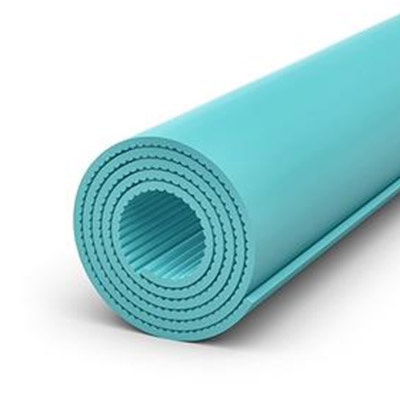
-
 Afrikaans
Afrikaans -
 Arabic
Arabic -
 Belarusian
Belarusian -
 Bengali
Bengali -
 Bulgarian
Bulgarian -
 Croatian
Croatian -
 Czech
Czech -
 Danish
Danish -
 Dutch
Dutch -
 English
English -
 Finnish
Finnish -
 French
French -
 German
German -
 Greek
Greek -
 hawaiian
hawaiian -
 Hebrew
Hebrew -
 Hindi
Hindi -
 Hungarian
Hungarian -
 Indonesian
Indonesian -
 irish
irish -
 Italian
Italian -
 Japanese
Japanese -
 Javanese
Javanese -
 kazakh
kazakh -
 Khmer
Khmer -
 Korean
Korean -
 Kyrgyz
Kyrgyz -
 Lao
Lao -
 Latin
Latin -
 Luxembourgish
Luxembourgish -
 Malay
Malay -
 Myanmar
Myanmar -
 Norwegian
Norwegian -
 Persian
Persian -
 Polish
Polish -
 Portuguese
Portuguese -
 Romanian
Romanian -
 Russian
Russian -
 Serbian
Serbian -
 Slovak
Slovak -
 Somali
Somali -
 Spanish
Spanish -
 Swedish
Swedish -
 Tagalog
Tagalog -
 Thai
Thai -
 Turkish
Turkish -
 Turkmen
Turkmen -
 Ukrainian
Ukrainian -
 Uighur
Uighur -
 Vietnamese
Vietnamese
Dez . 26, 2024 01:58 Back to list
Understanding the Key Distinctions Between Mountain Bikes and Hybrid Bikes
The Difference Between Mountain Bikes and Hybrid Bikes
When it comes to cycling, the equipment you choose can significantly impact your experience and performance. Two popular types of bikes are mountain bikes and hybrid bikes. While both serve the purpose of getting you from point A to point B, they are designed for different terrains and riding styles. Understanding the differences between these two types of bikes is essential for making an informed decision based on your cycling needs.
Design and Structure
Mountain bikes are specifically engineered for off-road cycling. Their frames are generally sturdier, built to withstand rough terrains like rocky trails, steep hills, and muddy paths. They often feature a more relaxed geometry to enhance stability on uneven surfaces. Mountain bikes come equipped with wide tires that provide better traction and shock absorption, which is essential when navigating obstacles.
On the other hand, hybrid bikes blend features of both road and mountain bikes, making them suitable for a variety of surfaces. The frames of hybrid bikes are typically lighter and more streamlined than mountain bikes, allowing for easier pedaling on paved roads. Their tires are narrower than those on mountain bikes but wider than standard road bike tires, allowing for versatility in handling both urban environments and light trails.
Tires and Suspension
One of the most significant differences between mountain bikes and hybrid bikes is their tire specifications. Mountain bike tires are usually knobby and thick, designed to offer maximum grip on challenging terrains. This design helps in navigating through dirt, gravel, and wet conditions while providing stability and control. Many mountain bikes also come with suspension systems—either front suspension (hardtail) or full suspension—that absorb shocks from bumps and drops, making rides over rough terrains more comfortable.
Hybrid bikes, however, are equipped with tires that aim for a balance between speed and comfort. They are often semi-slick, allowing for a smoother ride on paved surfaces while still providing enough surface area for some off-road capability. Additionally, many hybrid bikes offer a limited suspension system or none at all, focusing more on efficiency and speed on smooth trails and roads.
Riding Position and Comfort
difference between mountain bike and hybrid bike

The riding position on a mountain bike typically leans forward, allowing for better control when descending steep or uneven tracks. This aggressive position can lead to discomfort over long rides, especially for casual cyclists.
In contrast, hybrid bikes promote an upright riding position, which is more comfortable for leisurely rides and commuting. This position reduces strain on the back and neck, making it an ideal choice for those who prioritize comfort over speed. With hybrid bikes, riders can enjoy a more relaxed cycling experience, allowing for longer rides without fatigue.
Versatility and Use Cases
Mountain bikes are best suited for enthusiasts who love exploring rugged trails and tackling challenging terrains. If your primary riding environment includes backcountry paths, rocky landscapes, or steep forest trails, a mountain bike is your best option.
Hybrid bikes, on the other hand, are incredibly versatile. They are perfect for commuters who need to navigate city streets while having the capability to ride on bike paths and light trails. They are also a practical choice for casual cyclists looking to enjoy leisurely rides in parks or around the neighborhood. With their combination of features, hybrid bikes can handle a range of conditions without excelling in any one area.
Conclusion
In summary, the choice between a mountain bike and a hybrid bike ultimately depends on your cycling needs and preferences. If you're an adventure seeker looking to traverse challenging terrains and take on nature's obstacles, a mountain bike is undoubtedly the way to go. However, if you're searching for a comfortable ride that accommodates both city streets and occasional light trails, a hybrid bike will serve you well.
Understanding these differences ensures you select the right bike for your lifestyle, allowing you to maximize your enjoyment of cycling, whether for recreation, fitness, or commuting.
-
Top Kids Bike with gpt-4-turbo AI for Safe Rides
NewsAug.02,2025
-
Premium Titanium Road Bike: Lightweight & Durable
NewsAug.01,2025
-
Red Black BMX Bike with GPT-4-Turbo AI Tech
NewsJul.31,2025
-
New Red Anti-theft E-Bike | Easy Ride City Commuter
NewsJul.31,2025
-
BMX 20 Inch Bikes for Freestyle & Street | Fat Tire Options Available
NewsJul.30,2025
-
322 High Quality 26 Inch 21 Speed Adult Mountain Bike OEM MTB
NewsJul.29,2025

